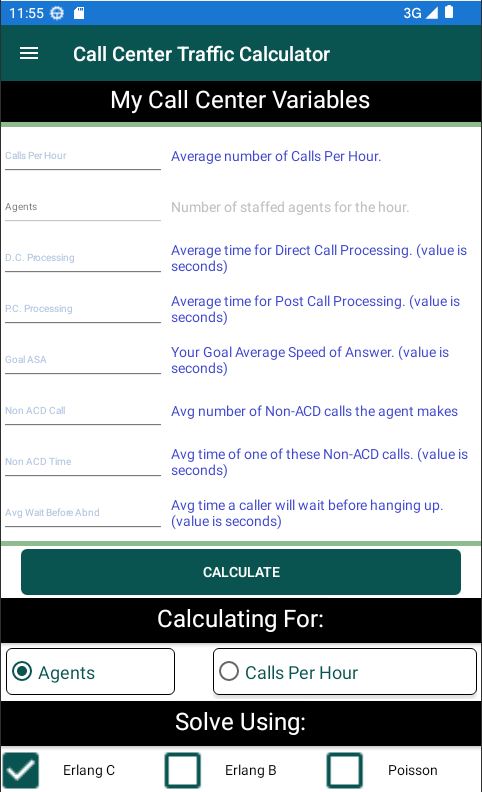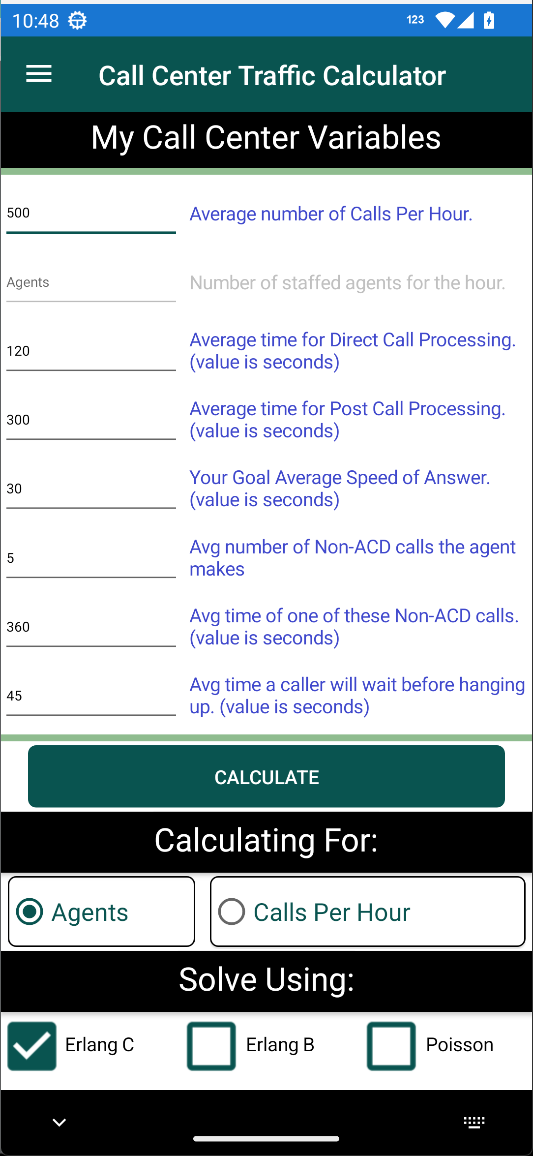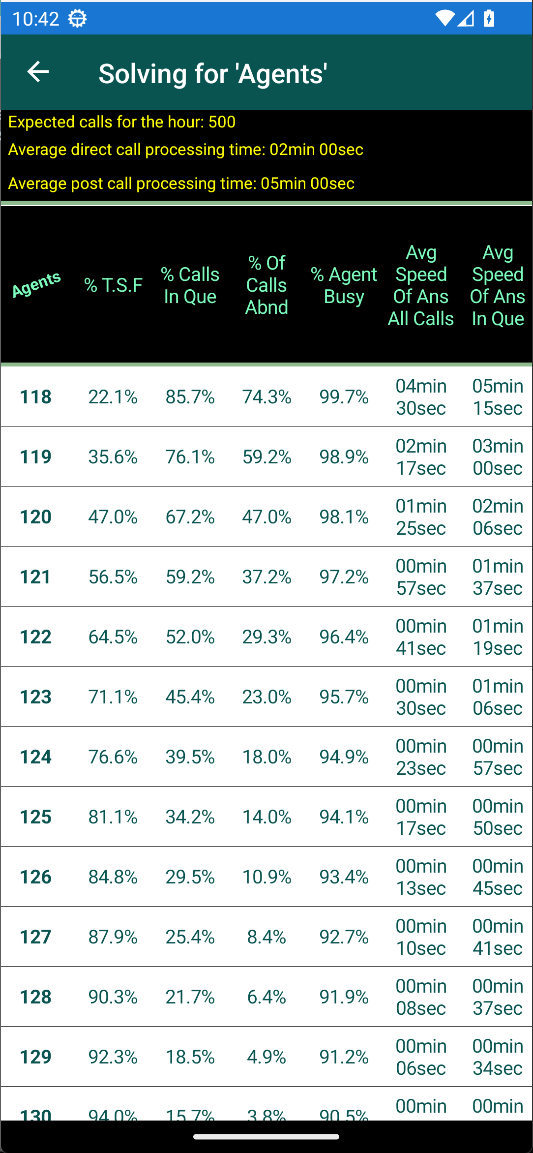Use the What If Call Center Traffic Calculator to project queue staffing needs based on call center averages
- Input variables into corresponding text boxes that reflect averages of the queue to assess.
- Choose data to assess, either 'Agents per hour' or 'Calls per hour', under the 'Solve For' header.
- Choose a formula, under the 'Solve Using' header, for calculating the variables that best reflect the queue operations, see Erlang B, Erlang C and Poisson definitions below.
My Call Center Variables

Set values that closely reflect the queue's expected hourly data under the My Call Center Variables heading.
Under the Calculate For heading select 'Agents' or 'Calls Per Hour'.
Select the traffic formula that best fits the type of call center you are managing.
Under the Solve Using heading select 'Erlang C' or 'Erlang B'. (See descriptions below)
Under the Calculate For heading select 'Agents' or 'Calls Per Hour'.
- Calls Per Hour - The number of calls expected to be offered to the queue for the hour of interest.
- Agents per Hour - The number of agents that are staffed for that queue for the hour of interest.
- D.C. Processing - Direct Call Processing (aka: ACD talk time). The average number of seconds the agent will spend with the caller for each ACD call. 180 seconds is 3 munutes, etc...
- P.C. Processing - Post Call Processing (aka: After call work time). The average number of seconds the agent will spend after each ACD call for call wrapup.
- Goal ASA - The target Average Speed of Answer, in seconds, for the incoming calls to be answered by agents.
- Non ACD calls - The average number of calls each agent may make (or take) in the hour that is NOT an ACD call, ie... follow up calls, personal calls, etc...
- Non ACD calls time - The average number of seconds that those Non ACD calls may take.
- Avg Wait Before Abnd - Average Wait before abandon time. The number of seconds callers will wait before they give up waiting for an agent to take their call.
Select the traffic formula that best fits the type of call center you are managing.
Under the Solve Using heading select 'Erlang C' or 'Erlang B'. (See descriptions below)
Press the 'Calculate' button to view an array of solutions, as seen above, that may better show how to staff that queue for the targeted time period.



Erlang C
The Erlang C model calculates predicted waiting times (delay) based on three things: the number of servers (agents); the number of people waiting to be served (callers); and the average amount of time it takes to serve each person.
It can also predict the resources required to keep waiting times within targeted limits. Erlang C assumes no busy signals or lost calls, so it has a tendency to overestimate staff required. This is the best formula when using the this calculator.
Erlang B
The Erlang B model is commonly used for first-attempt calls to queues without consideration of retry rate - usually because callers are rerouted to another queue or split, or where callers will see very little blockage.
The formula assumes that if callers get busy signals, they go away forever, never to retry (lost calls cleared). Since some callers retry, Erlang B can underestimate trunks required. However, Erlang B is generally accurate in situations with few busy signals.
Poisson
The Poisson model formula is sometimes used for calculating trunks. It assumes that if callers get busy signals, they keep trying until they successfully get through. Since some callers won't keep retrying, Poisson can overestimate trunks required.

